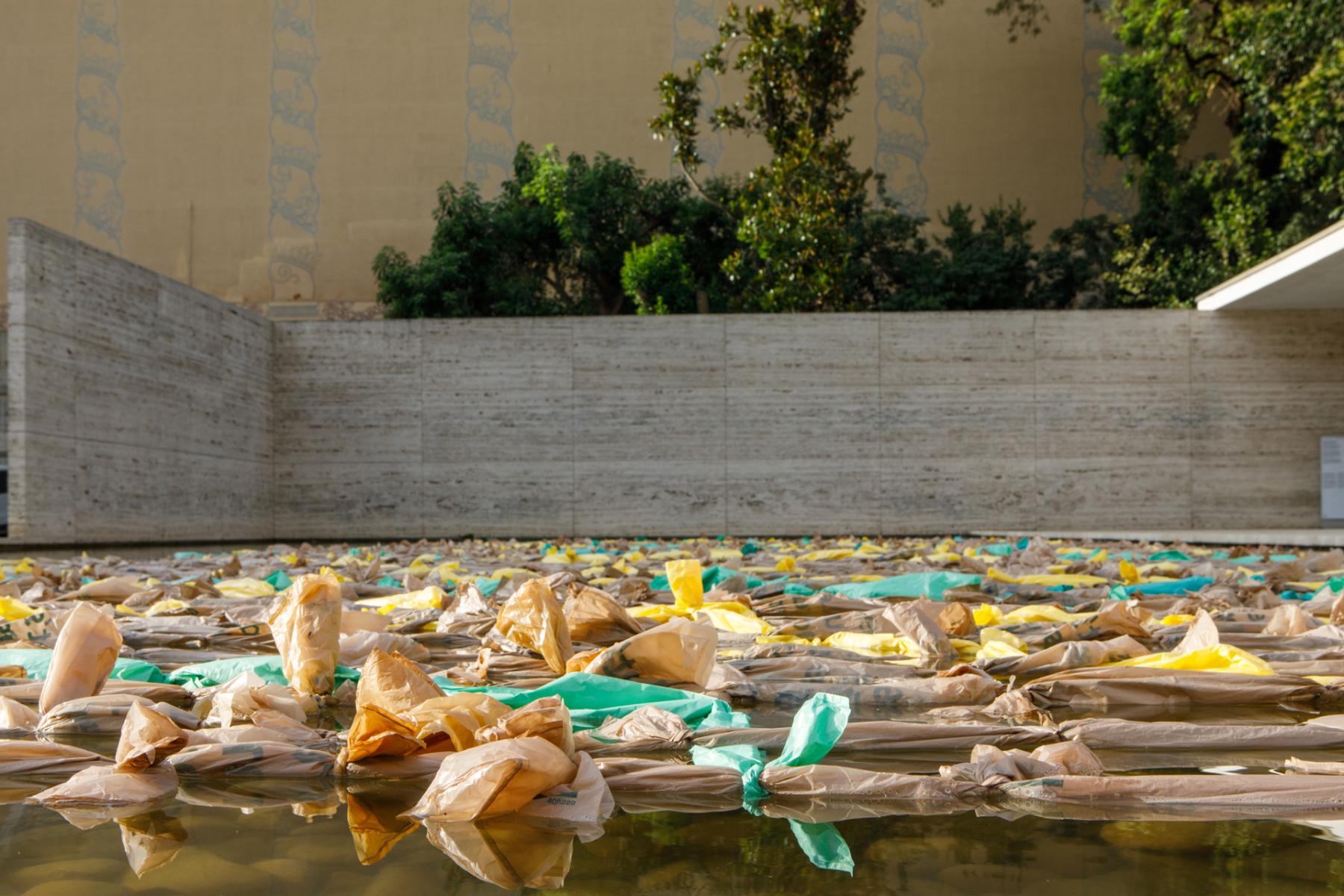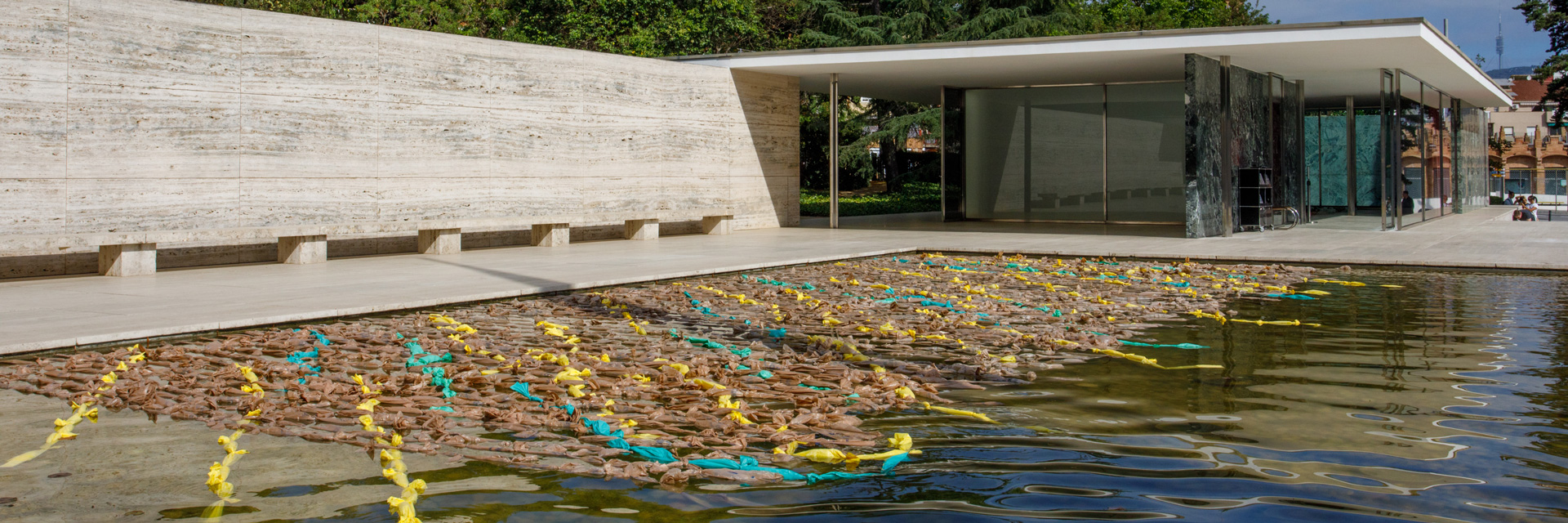
Cottle Continues The Cost of Money
with Installation at Mies van der Rohe Pavilion
Cottle Continues The Cost of Money
with Installation at Mies van der Rohe Pavilion
Mark Cottle, associate professor of the School of Architecture, has elevated the disposable shopping bag to focus attention on the extreme human and environmental costs of capital.
The Cost of Money: Raft, an installation at the Mies van der Rohe Pavilion in Barcelona, took the form of two large artworks. One carpeted the main room, surrounding the iconic onyx wall. The other floated in the main reflection pool. At roughly 44' x 20' each, their length was established by the interior room, following the proportions of the exterior pool.
Cottle fabricated the work from some 10,000 single-use shopping bags that he had been saving over the course of several years, together with the contributions of students and friends. The colors in the main room index the Pavilion's rich marbles and colored glass, while those in the pool connect with the terrazzo paving and surrounding landscape.
"I sought to draw the aesthetics and technologies of the early modern period into conversation with materials of our own time," Cottle said. "Each plastic bag represents a transaction, the tangible residue of consumption, symbols of a disposable culture."
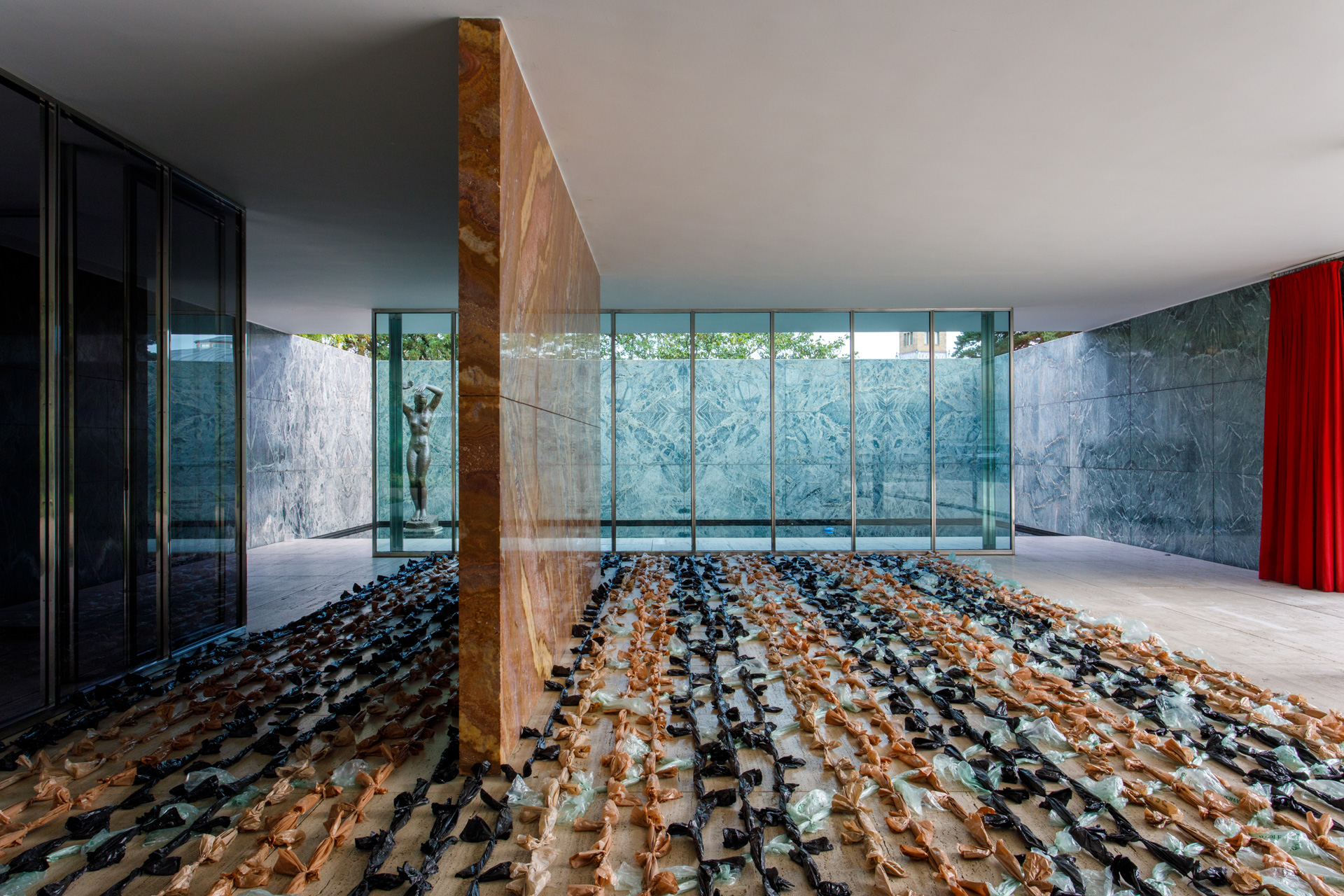
"I was haunted by images in news reports of vast quantities of garbage in the oceans, and boats in the Mediterranean Sea, packed with people desperate to reach Europe, often resulting in tragedy," Cottle said in an interview with STIR.
"Théodore Géricault's painting, The Raft of the Medusa, a late 19th century depiction of a French naval disaster, served as a starting point. And gave me the title, ‘raft.’”
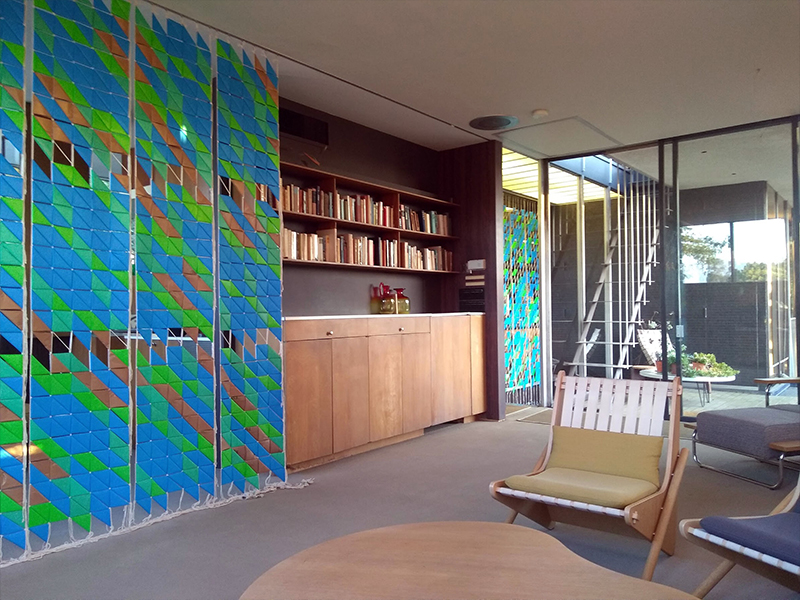
Raft continues work from The Cost of Money: Tapestry. As the 2019 Artist in Residence at the Neutra VDL Research House in Silver Lake, Los Angeles, Cottle displayed hanging tapestries made of shopping bags folded into triangles.
"I didn't have any idea what to do with [the bags], or even how best to store them," Cottle told STIR. "So, I was delighted to find an entry point into new material for my work."
"These puffy triangles of plastic, laid out on a table, began to form tile patterns. From there, I devised a way to string them together with cotton twine into tapestries."
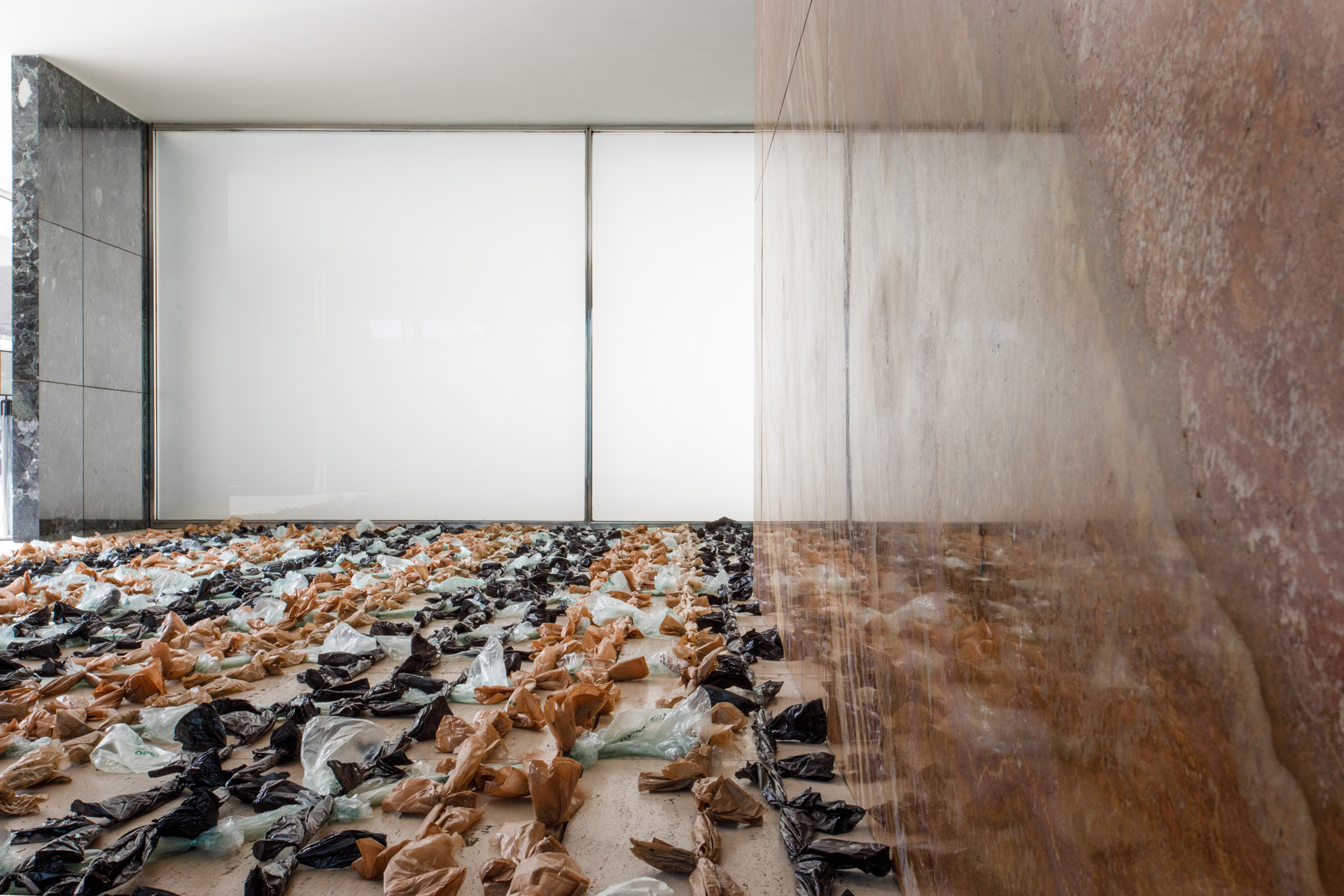
"Cottle materializes his explorations by using emblematic works of modern architecture as a backdrop and element of interaction," according to Designboom.
In an interview with Metalocus, Cottle said, "the Pavilion represents a moment in which the industry was seen as a necessary tool towards the future but which already had a high social cost."
Read more about the installation in Arquitectura Viva (Spanish) and Domus (Italian).
